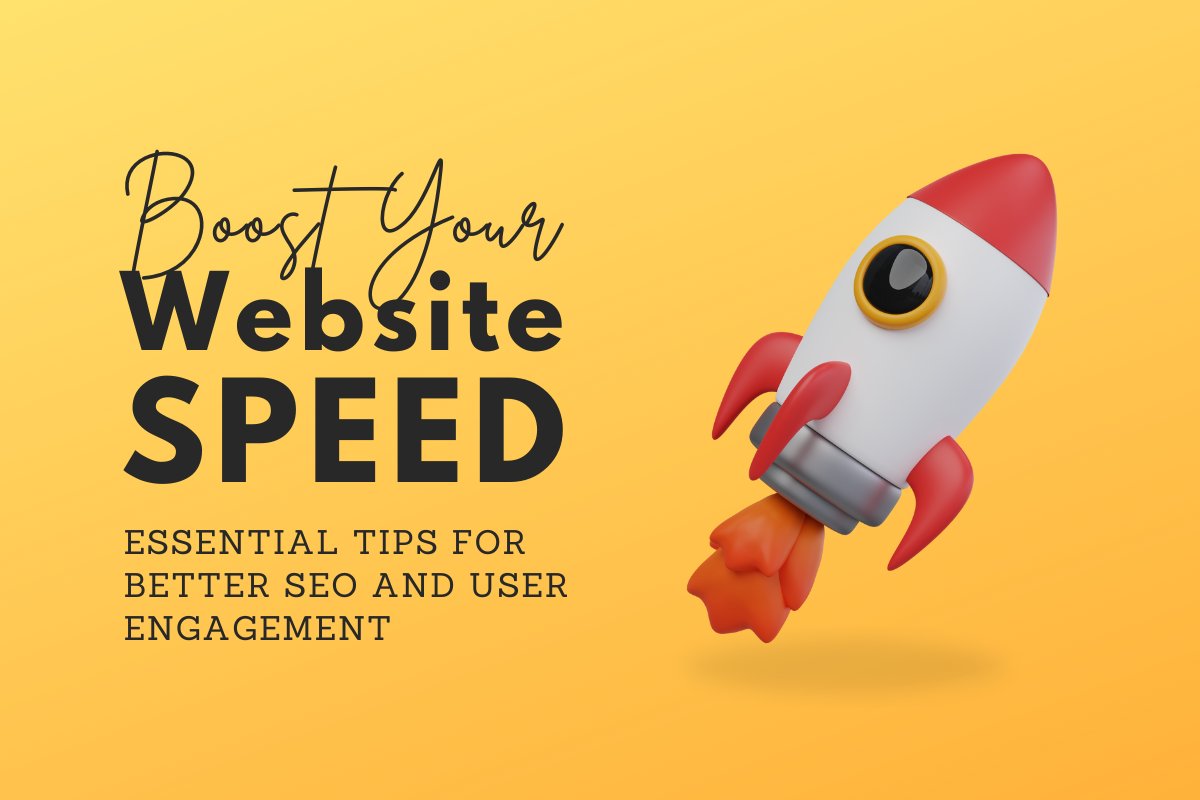
Boost Your Website Speed | Essential Tips for Better SEO and User Engagement
In today’s fast-paced digital landscape, website speed optimization is crucial to the success of any online business. A fast-loading website not only enhances user experience but also positively impacts SEO, helping you rank higher in search results. For businesses, particularly those in competitive markets, improving website speed can lead to higher engagement, more conversions, and a stronger online presence.
This guide will walk you through the steps to boost your website speed, ensuring a seamless user experience and better search engine performance.
Why Website Speed Optimization Matters for User Experience and SEO
Website speed affects almost every aspect of your online presence. Here’s why it matters:
- User Retention: A fast website encourages users to stay and engage, while slow loading times lead to high bounce rates.
- Conversions: Faster websites lead to higher conversions as users are more likely to complete desired actions without frustration.
- SEO: Google considers site speed a ranking factor, making it essential for achieving higher visibility in search engine results.
In essence, a faster website can improve both user satisfaction and SEO performance, creating a win-win for your business.
Key Tips for Boosting Website Speed
Here’s how you can enhance website speed for a seamless user experience and improved SEO:
1. Optimize Images
- Why: Large images can significantly increase website loading time, slowing down the user experience.
- How: Compress images using tools like TinyPNG or ShortPixel, and choose the right file format (JPEG for photos, PNG for graphics). Also, implement lazy loading, which loads images only when they’re about to appear on the screen.
2. Minimize HTTP Requests
- Why: Each HTTP request adds to the loading time.
- How: Reduce the number of elements on each page, combine CSS and JavaScript files, and use CSS Sprites for images that appear frequently. Tools like GTMetrix can help you identify and reduce HTTP requests.
3. Enable Browser Caching
- Why: Caching stores resources locally, so returning visitors don’t have to reload the entire page.
- How: Use caching plugins like WP Rocket or W3 Total Cache for WordPress, or configure browser caching through your server settings if using other platforms.
4. Use a Content Delivery Network (CDN)
- Why: A CDN distributes content across multiple servers worldwide, speeding up delivery based on the user’s location.
- How: Consider using CDNs like Cloudflare or StackPath to serve your content faster to users around the globe. This reduces latency and boosts load speed, especially for international traffic.
5. Reduce Server Response Time
- Why: A slow server response can delay your entire website load time.
- How: Choose a reliable hosting provider and ensure your server is optimized. Upgrading to a dedicated or VPS hosting plan can also help reduce response time, especially if you have high traffic.
6. Minify CSS, JavaScript, and HTML
- Why: Extra spaces, comments, and line breaks add unnecessary data, increasing load times.
- How: Use tools like Minify, or enable minification in speed optimization plugins (e.g., Autoptimize) to clean up your CSS, JavaScript, and HTML files without affecting functionality.
7. Implement AMP for Mobile
- Why: Accelerated Mobile Pages (AMP) ensures lightning-fast load times for mobile users, which is crucial for mobile SEO.
- How: Enable AMP on your site by installing an AMP plugin if you’re using WordPress, or configure it through Google’s AMP framework if on a custom-built site.
8. Limit Redirects
- Why: Each redirect adds HTTP requests, slowing down page load.
- How: Audit your website for unnecessary redirects using tools like Screaming Frog, and limit the use of 301 redirects unless absolutely necessary.
9. Optimize Web Fonts
- Why: Custom web fonts can add additional load time.
- How: Use only the font weights and styles you need, and consider loading fonts asynchronously. Google Fonts and Adobe Fonts both offer optimization settings to help with load speeds.
10. Optimize Your Database
- Why: An overloaded database with old content, spam, and transients can slow down load times.
- How: Regularly clean your database using plugins like WP-Optimize, which removes unnecessary data and optimizes database tables to ensure quicker loading.
Tools for Analyzing and Monitoring Website Speed
Using the right tools can help you pinpoint speed issues and track improvements over time. Here are some popular tools for analyzing website performance:
- Google PageSpeed Insights: Analyzes page speed on both mobile and desktop, offering suggestions for improvement.
- GTMetrix: Provides a detailed report on page load time, total page size, and recommendations for optimization.
- Pingdom: Offers insights into performance bottlenecks and provides suggestions for reducing load time.
- Lighthouse: Google’s open-source tool that assesses page performance, accessibility, and more.
Final Thoughts on Boosting Website Speed
Effective website speed optimization is one of the best ways to enhance user experience, boost engagement, and improve SEO. By following these tips and using the suggested tools, you can significantly improve your website load time to create a fast, efficient, and user-friendly site that keeps visitors engaged and supports higher search engine rankings.
As a web design agency, we understand the impact that fast website load time and responsive website speed optimization can have on your business. If you need help optimizing your website speed, don’t hesitate to reach out to our team. We’re here to help make your website faster, better, and fully prepared for success!


 November 12, 2024
November 12, 2024